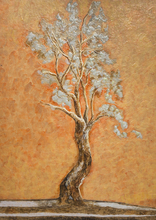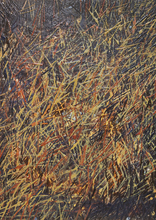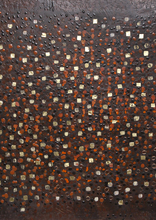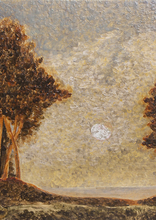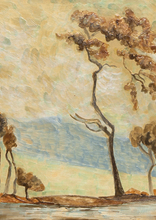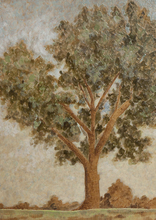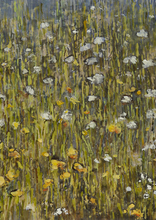Artist of the Month
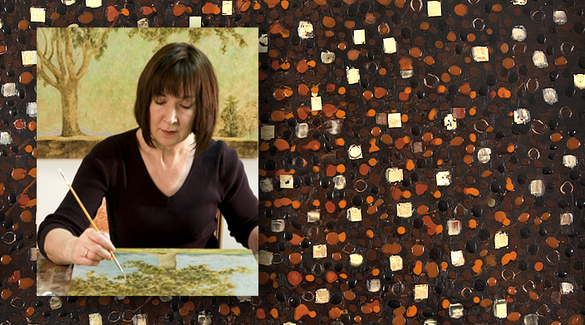
Eve Barbeau
Eve Barbeau
Saskatchewan NAC is very pleased to feature Saskatoon artist Eve Barbeau as a NAC Artist of the Month.
Eve Barbeau (formerly Eve Kotyk) was born in 1950 in Warman, Saskatchewan. She studied at the University of Saskatchewan, in Saskatoon, graduating with a Bachelor of Fine Arts in 1988. Her instructors there included Otto Rogers and Robert Christie.
Since 1989, Eve has worked in art galleries in and around Saskatoon in various capacities including as gallery assistant at Art Placement Gallery, and for ten years as collections manager for the Mendel Art Gallery.
Today, while Eve works in various mediums including watercolour, oil, acrylic, collage and wood, she primarily works in encaustic on panel. Inspired by Impressionist painting, she continues to explore the petite tache — a hallmark of Impressionism — in both her representational and abstract works.
Eve’s work has been featured in many Saskatchewan exhibitions, including at the McIntyre Gallery (Regina), Art Placement Gallery, Frances Morrison Library Gallery and St. Thomas Moore Gallery, and has appeared in publications including the Herstory Calendar.
Eve’s work can be found in many permanent collections, including Saskatchewan Arts Board, University of Saskatchewan, SaskPower and SGI.
Eve currently lives in Saskatoon, Saskatchewan.
Below are some examples of Eve’s work available for purchase through our NACmarket, and an interview with Eve from September 2015.
NACmarket: Eve Barbeau
Interview
How did you come to be an artist?
I tend to believe that given sufficient desire and practice anyone can become an artist, and yet, I admit that there is something, be it circumstances or genes, that sets people on a particular path. I distinctly remember a visit to relatives when I was three. My cousins were all older than I was, and to keep me busy they gave me an old calendar page and the stub of a pencil. “Draw something,” they said. I drew what all three-year-olds draw: a lopsided circle with two, roughly parallel, mismatched and lumpy circles inside, below that a line—neither curved nor straight. Proudly, I showed this drawing to my cousins and they understood. They knew I had drawn a face. That was my first inkling that images communicate, and for some reason that mattered. I think I began to become an artist then, though it took years of practice and study, in fits and starts, to really earn that title. In the 80s I realized that I needed proper teachers, and I entered the Fine Arts program at the University of Saskatchewan, earning my Bachelor's degree in 1988.
How would you describe your artwork, and your technique in encaustic and other mediums.
In all my work whether abstract or realistic I prize a sense of light most. I was drawn to encaustic for that reason. Beeswax is translucent and almost seems to catch the light between its layers. The wax is applied hot and congeals almost instantly creating a distinctive mark. I build my paintings from these marks. It is difficult to be too precise with encaustic and that keeps me from becoming too precious. The process of heating and scraping allow for unintended and sometimes magical things to happen.
How did you start creating work in your particular style?
As the end of my time at university I developed a way of building up a painting from small bits of paper. I tore these pieces of paper from whatever was handy, glued them to a surface, flooded them with thinned acrylic paint, and added more bits of paper. Each small bit of paper was a mark. When finally I felt I had done all I could with this medium I looked around for a medium that would give me a similar textural surface. I thought encaustic might do provide that surface. Almost all of my previous paintings had been abstract, and at first I tried to do the same with encaustic with poor results. A look through a history book made me want to paint a tree like David Caspar Friedrich. My tree looked nothing like his, but it set me on my way to a series of tree paintings. The tree paintings were portrait-like with little or nothing in the backgrounds. I seem always to move from painting recognizable objects to abstraction and back again and soon I was doing a series of paintings based on space (as in the cosmos). I used the same processes I'd learned while painting trees, and added things like scraping away encaustic to reveal layers beneath or incising.
Do you bring particular themes, ideas or philosophies to your work?
Thankfully my themes, ideas and philosophies have grown and changed as I continue to practice. There are a few things that matter to me, I want my work to be uplifting and unifying — to offer light. To me all those little marks I make, all different, work together to make up a unified whole. I love to see them as a metaphor on how we, altogether, and all different make up a whole community, society, and world. A bit grand but you might as well go for the gusto.
What artists (and others) have influenced you?
My first strong influence was my father. He had a very tough life and through intellect, and perseverance he managed to keep his family going. Artists who have influenced me are Matisse for his drawing, Van Gogh for his constant effort to learn, and that amazing yellow, Otto Rogers for his mentorship and philosophies, Terry Pratchett for his sense of play, science fiction for the wonder and many, many more.
Are there some other Saskatchewan artists whose work you admire?
I admire so many Saskatchewan artists that it’s difficult to list them all. For his mark-making ability, Lorenzo Dupuis, Otto Rogers for his belief, Bill Perehudoff for his work-ethic, James Henderson for his light, Stanley Brunst for his colour, and Zachary Logan because, damn, that guy can paint!
What are the worst and the best parts of being an artist?
The best part of being an artist is the ability to create and make things. Making — any kind of making — is an amazing thing. Being an artist makes for a rich life, an observant life, and often an examined life. Who wouldn't want those things? There are some downsides — most of us go through horrid, distressing periods of floundering when we doubt everything about our artmaking and we forget what a great gift it is to create anything at all. That part isn't great, but in time you learn that it's all part of the process and one day you'll be on a roll again. It's very nice thing is to have another see your work and connect to it. That's the cherry on top.
Eve Barbeau
- Born: 1950.
- Resides: Saskatoon, SK
- Mediums: Acrylic, Collage, Encaustic, Mixed Media, Watercolour
Past Artists of the Month

|
Hillary RyderDecember 2017+ View Artist |

|
Kathleen SlavinNovember 2016+ View Artist |

|
Bonnie A. ConlyJune 2016+ View Artist |

|
Michael BromleyDecember 2015+ View Artist |

|
Marlessa WesolowskiNovember 2015+ View Artist |

|
Ljubica Fa-HardiOctober 2015+ View Artist |

|
Jerry JessopOctober 2015+ View Artist |

|
Eve BarbeauSeptember 2015+ View Artist |

|
Terri LemireAugust 2015+ View Artist |

|
Jason RobinsJuly 2015+ View Artist |

|
Leah DorionJune 2015+ View Artist |

|
Jessica EdwardsMay 2015+ View Artist |

|
Kristopher GrunertApril 2015+ View Artist |

|
Bronwyn SchusterMarch 2015+ View Artist |

|
Jane A. EvansMarch 2015+ View Artist |

|
Articulate InkFebruary 2015+ View Artist |
Brandi Leah HoferJanuary 2015+ View Artist |

|
Chris WikmanMarch 2014+ View Artist |

|
Michaela HoppeDecember 2013+ View Artist |
Connect With Us







